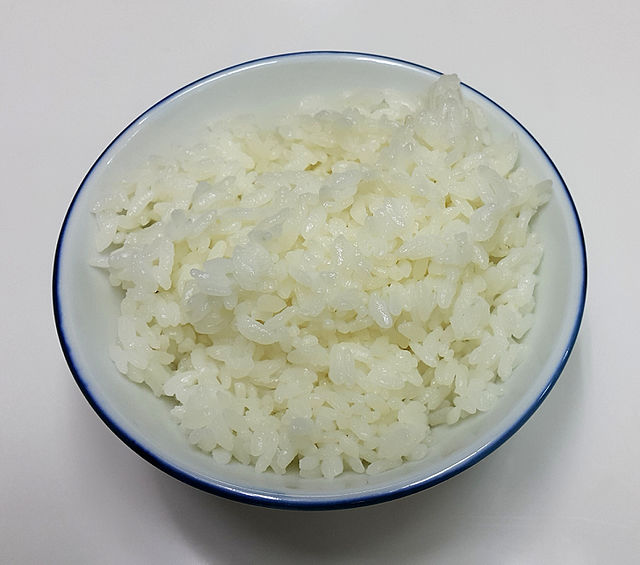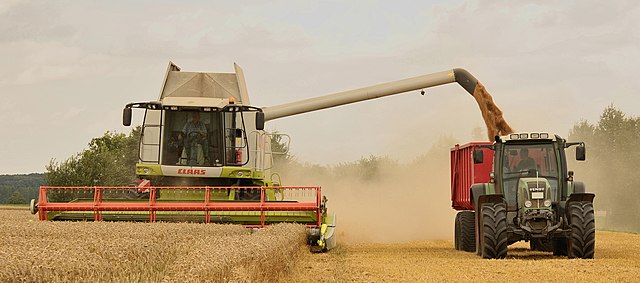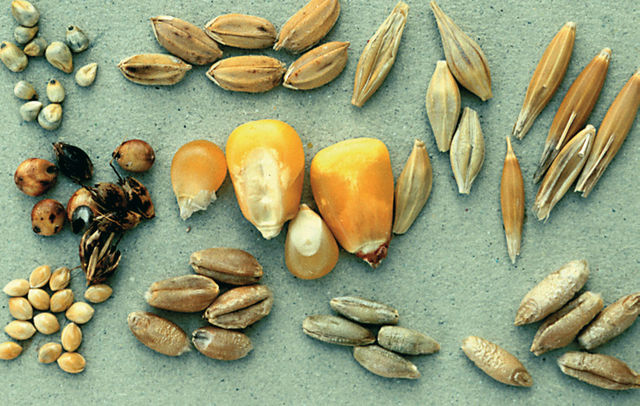A staple food, food staple, or simply staple, is a food that is eaten often and in such quantities that it constitutes a dominant portion of a standard diet for an individual or a population group, supplying a large fraction of energy needs and generally forming a significant proportion of the intake of other nutrients as well. For humans, a staple food of a specific society may be eaten as often as every day or every meal, and most people live on a diet based on just a small variety of food staples. Specific staples vary from place to place, but typically are inexpensive or readily available foods that supply one or more of the macronutrients and micronutrients needed for survival and health: carbohydrates, proteins, fats, minerals, and vitamins. Typical examples include grains, seeds, nuts and root vegetables. Among them, cereals, legumes and tubers account for about 90% of the world's food calorie intake.
Various types of potatoes
Unprocessed seeds of spelt, a historically important staple food
Harvesting Sago pith to produce the starch in Papua New Guinea
White rice, cooked
A grain is a small, hard, dry fruit (caryopsis) – with or without an attached hull layer – harvested for human or animal consumption. A grain crop is a grain-producing plant. The two main types of commercial grain crops are cereals and legumes.
Various food grains at a market in India.
Harvesting a cereal with a combine harvester accompanied by a tractor and trailer.
Cereal grains: (top) pearl millet, rice, barley (middle) sorghum, maize, oats (bottom) millet, wheat, rye, triticale
Cereal grain seeds clockwise from top-left: wheat, spelt, oat, barley.








